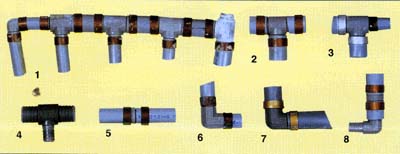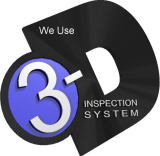
Polybutylene Plumbing
What Every Buyer or Seller Should Know
From the mid 1970's to the mid 1990's, builders began incorporating polybutylene (PB) plumbing - plastic pipes linked with copper, aluminum or plastic fittings - into mobile homes, single family homes and multi-unit dwellings. The polybutylene pipes were used both inside homes, to transfer water to sinks and tub/showers, and outside underground in the form of a polybutylene "yard service line" that conveys water from the meter to the house or mobile home. The PB pipes began leaking due to corrosion from chlorine and chemicals commonly found in tap water, leading to a 1995 class action lawsuit against manufacturers of the piping.
Polybutylene plumbing still is common in the Southeast and Georgia and is estimated to be present in upwards of 25% of the homes built between 1978 and 1995. To determine if a home has this type of piping, check to see if exterior pipe to the water main is blue. Look for the incoming water line at basement or crawlspace walls, or in the case of slab foundations, check the pipe after the meter at the water shutoff near the street. To check the interior pipes, look to see if the pipes near the hot water heater are blue, gray or black. Typically, this pipe may have a series of manufacturer's and ASTM numbers. An easy identifier is to look for the marking "PB-2110" stamped on the pipe. PB failure is believed to result from the pipe system's reactions to common ingredients found in public water systems, such as chlorine, which causes the plastic pipes to become brittle and spring leaks. Unless an acitve leak is detected, it is difficult to determine the true condition of pipe integrity because the decay develops from the inside diameter of the pipe. Therefore, it is wise to assume that all polybutylene plumbing is suspect for potential leaks, regardless of the age of the home.

Homeowners with polybutylene pipe may qualify for financial assistance as part of a class-action lawsuit. While the elegibility requirements have been modified in recent years, the class-action suit remains open. Homeowners need to contact the Consumer Plumbing Recovery Center at 800-392-7591 to determine their elegibility.
It is important to know that those people purchasing or considering buying a property with polybutylene plumbing are not eligible to participate in the class action lawsuit until they own the property outright, meaning the buyers whose inspection reveals PB plumbing may want to negotiate with sellers over the cost of re-piping or ask sellers to replace the pipes in advance of the sale. Retrofitting pipes involves converting the PB to copper, CPVC (white plastic) or PEX (red & blue plastic) which are all acceptable code compliant materials. I would be happy to supply you with names of plumbing companies who specialize in turn-key polybutylene pipe replacement for price quotes.
For more information on PB plumbing, visit www.polybutylene.com.





